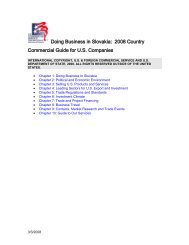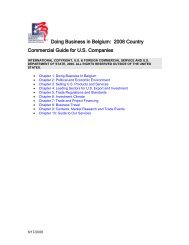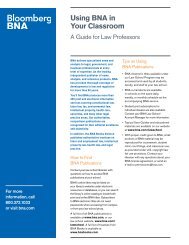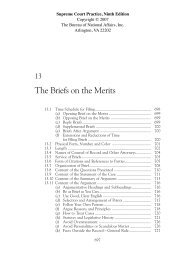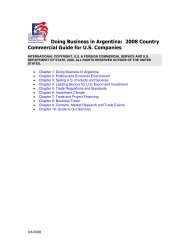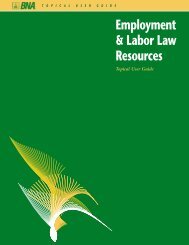Doing Business In (Insert Country Name Here) - BNA
Doing Business In (Insert Country Name Here) - BNA
Doing Business In (Insert Country Name Here) - BNA
Create successful ePaper yourself
Turn your PDF publications into a flip-book with our unique Google optimized e-Paper software.
Designs<br />
The EU adopted a Regulation introducing a single Community system for the protection<br />
of designs in December 2001. The Regulation provides for two types of design<br />
protection, directly applicable in each EU Member State: the registered Community<br />
design and the unregistered Community design. Under the registered Community design<br />
system, holders of eligible designs can use an inexpensive procedure to register them<br />
with the EU’s Office for Harmonization in the <strong>In</strong>ternal Market (OHIM), based in Alicante,<br />
Spain. They will then be granted exclusive rights to use the designs anywhere in the EU<br />
for up to twenty-five years. Unregistered Community designs that meet the Regulation’s<br />
requirements are automatically protected for three years from the date of disclosure of<br />
the design to the public.<br />
Key Link: [http://oami.europa.eu/]<br />
Trademark Exhaustion<br />
Within the EU, the rights conferred on trademark holders are subject to the principle of<br />
"exhaustion." Exhaustion means that once trademark holders have placed their product<br />
on the market in one Member State, they lose the right to prevent the resale of that<br />
product in another EU country. This has led to an increase in the practice of so called<br />
"parallel importing" whereby goods bought in one Member State are sold in another by<br />
third parties unaffiliated to the manufacturer. Parallel trade is particularly problematic for<br />
the research-based pharmaceutical industry where drug prices vary from country to<br />
country due to national price Regulation.<br />
Community wide exhaustion is spelled out in the Directive on harmonizing trademark<br />
laws. <strong>In</strong> a paper published in 2003, the Commission indicated that it had no plans to<br />
propose changes to existing legal provisions.<br />
Key Link: [http://ec.europa.eu/internal_market/indprop/tm/index_en.htm]<br />
Under the French intellectual property rights regime, patents, trademarks, and designs<br />
and models protect industrial property, while literary/artistic property is protected by<br />
copyrights. By virtue of the Paris Convention and the Washington Treaty regarding<br />
industrial property, U.S. nationals are entitled to receive the same protection of industrial<br />
property rights in France as French nationals. <strong>In</strong> addition, U.S. nationals have a "right of<br />
priority period" after filing a U.S. patent, trademark, design or model, in which to file a<br />
corresponding application in France. This period is twelve months for patents and six<br />
months for trademarks, designs and models.<br />
Patents:<br />
There are two types of patents: patents of invention (Brevets d'<strong>In</strong>vention) and certificates<br />
of utility (Certificats d'Utilité). Patents of invention cover all inventions. Certificates of<br />
utility cover all inventions except those of a pharmaceutical nature, which are covered by<br />
complementary certificates (Certificats Complémentaires de Protection).<br />
<strong>In</strong> order to qualify for patent protection, the invention must:<br />
* Have an industrial or agricultural application<br />
2/15/2008 <strong>Country</strong> Commercial Guide for France 25<br />
INTERNATIONAL COPYRIGHT, U.S. & FOREIGN COMMERCIAL SERVICE AND U.S. DEPARTMENT OF STATE,<br />
© 2007. ALL RIGHTS RESERVED OUTSIDE OF THE UNITED STATES.



